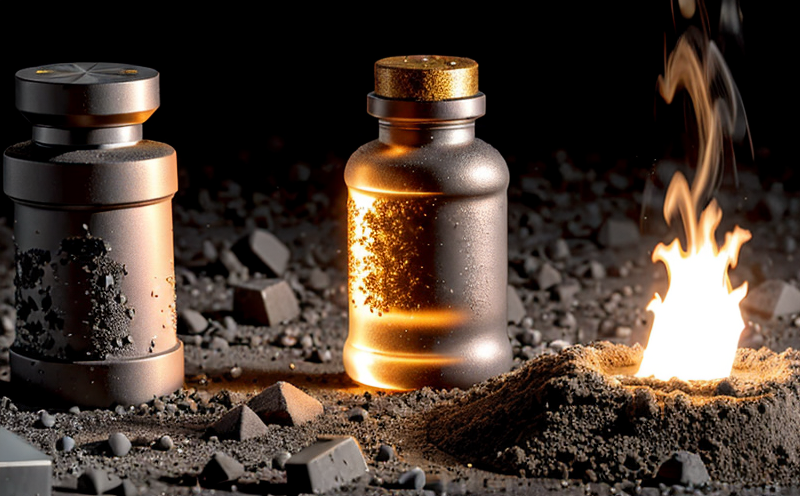ASTM E900 Prediction of Radiation Damage in Reactor Vessel Steels
The ASTM E900 standard is a critical tool used to predict radiation damage in reactor vessel steels, ensuring the reliability and safety of nuclear facilities. This service is essential for quality managers, compliance officers, R&D engineers, and procurement teams working in the nuclear sector.
ASTM E900 provides a framework for assessing how materials will behave under high neutron fluence environments typical of nuclear reactors. The standard specifies methodologies to predict the onset and progression of radiation damage, including embrittlement and changes in mechanical properties. This predictive capability is crucial for optimizing reactor design, ensuring component longevity, and enhancing safety margins.
The testing process involves subjecting samples of reactor vessel steels to neutron irradiation in a laboratory setting that closely mimics the conditions found within nuclear reactors. Following irradiation, the specimens undergo detailed characterization using techniques such as microhardness testing, fractography, and mechanical property evaluation. These analyses provide insights into how the material properties have changed due to radiation exposure.
The predictive nature of ASTM E900 is particularly valuable for R&D teams seeking to innovate in nuclear technology. By understanding the effects of radiation on materials at an early stage, engineers can design more resilient components that withstand harsh reactor environments. This knowledge also supports compliance officers by ensuring adherence to regulatory standards and guidelines.
ASTM E900 testing is not just a laboratory exercise; it has real-world implications for nuclear safety and performance. By accurately predicting radiation damage, this service helps prevent premature failures of critical components, reducing maintenance costs and enhancing overall reactor reliability. For quality managers, the ability to predict material behavior under extreme conditions ensures that only materials capable of withstanding these stresses are used in construction.
The predictive capabilities of ASTM E900 extend beyond immediate application to long-term considerations for nuclear facilities. By understanding how materials degrade over time due to radiation exposure, engineers can design reactors with extended operational lifetimes and reduced risk of catastrophic failure. This is particularly important as the global nuclear industry seeks to extend the service life of existing plants while ensuring safety standards are met.
In summary, ASTM E900 testing provides a robust method for predicting radiation damage in reactor vessel steels, offering valuable insights into material performance under extreme conditions. Its predictive capabilities empower engineers and compliance officers with the knowledge needed to design safer, more reliable nuclear facilities.
Applied Standards
| Standard Reference | Description |
|---|---|
| ASTM E900-18 | This standard provides a methodology for predicting the radiation-induced mechanical property changes in reactor vessel steels. It includes guidelines for irradiation testing, characterization methods, and predictive models. |
| ISO 24635:2017 | An international standard that supports the use of ASTM E900 by providing additional guidance on irradiation facilities and test procedures. |
| EN 15846:2009 | This European standard offers a framework for assessing radiation-induced embrittlement in reactor vessel materials, complementing the predictive capabilities of ASTM E900. |
International Acceptance and Recognition
The ASTM E900 standard is widely recognized and accepted by regulatory bodies around the world. Its acceptance in countries with robust nuclear industries, such as the United States, France, and Japan, underscores its importance in ensuring reactor vessel materials meet stringent safety requirements.
Regulatory agencies like the U.S. Nuclear Regulatory Commission (NRC) mandate compliance with ASTM E900 for new designs and modifications of existing reactors. This ensures that only materials proven to withstand high neutron fluence environments are used, reducing the risk of accidents or failures.
Internationally, ASTM E900 is often cited in international agreements and standards frameworks, enhancing its global relevance. Its acceptance by organizations like the International Atomic Energy Agency (IAEA) further solidifies its role as a cornerstone for nuclear safety practices worldwide.
The widespread use of ASTM E900 contributes to a harmonized approach to reactor vessel materials testing across different regions. This consistency is crucial in an industry where cross-border collaboration and regulatory alignment are increasingly important.
Competitive Advantage and Market Impact
Adopting the ASTM E900 standard provides significant competitive advantages for companies operating in the nuclear sector. By predicting radiation damage accurately, firms can optimize material selection and design processes, leading to more reliable products.
The predictive capabilities of ASTM E900 allow businesses to stay ahead of regulatory changes and market demands. This foresight enables them to introduce innovative reactor vessel designs that meet current safety standards while anticipating future requirements.
For quality managers and compliance officers, adherence to ASTM E900 ensures that products comply with international standards, enhancing brand reputation and trustworthiness in the global market. The ability to predict radiation-induced damage accurately also reduces warranty claims and product recalls, further bolstering competitive position.
In the broader context of nuclear safety, companies leveraging ASTM E900 contribute positively to the industry’s overall performance. By ensuring that reactor vessel materials are robust enough to withstand high neutron fluence environments, they help maintain a high standard of reliability and safety across the sector.





